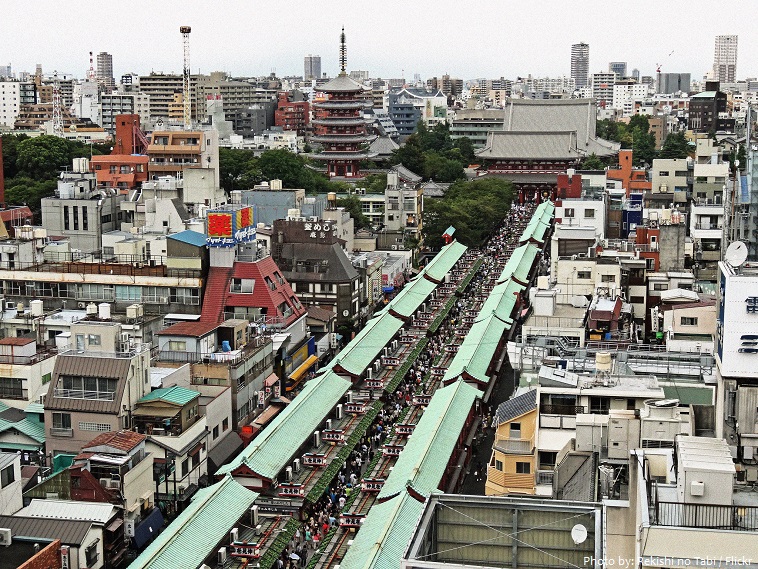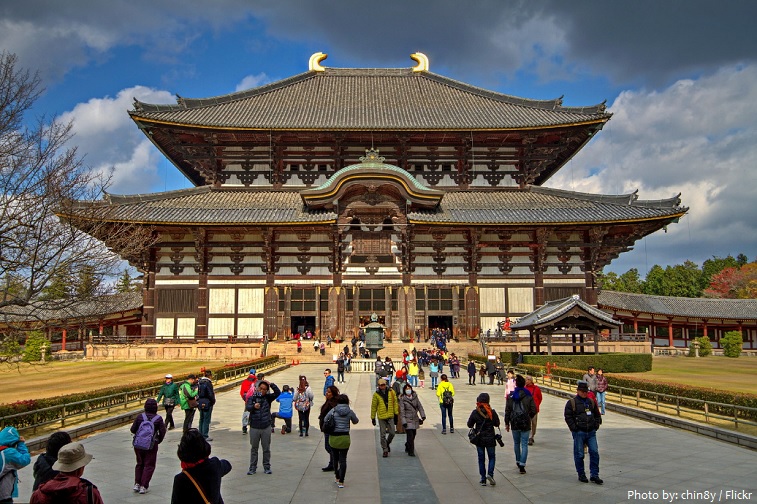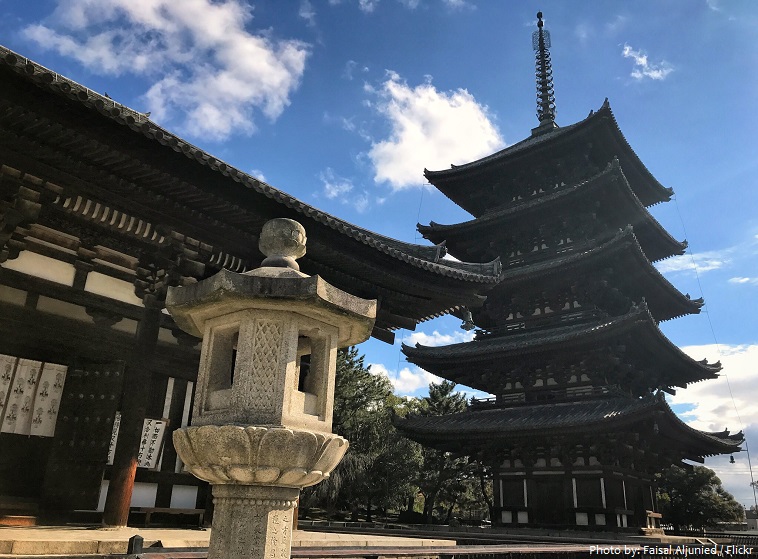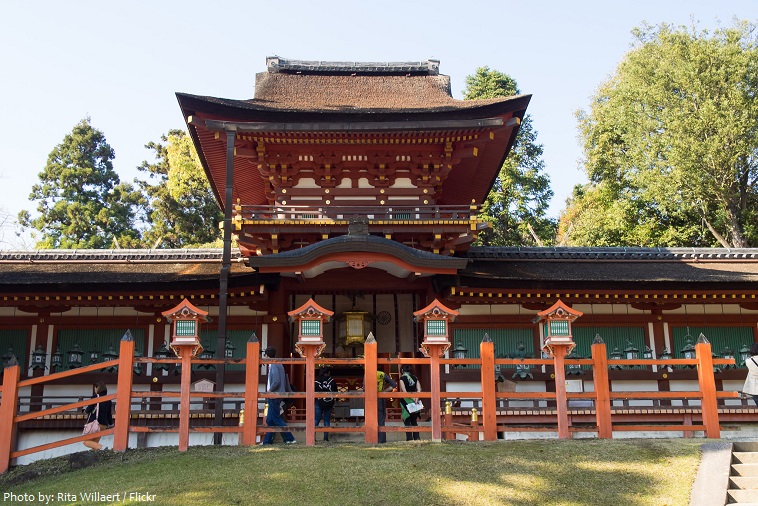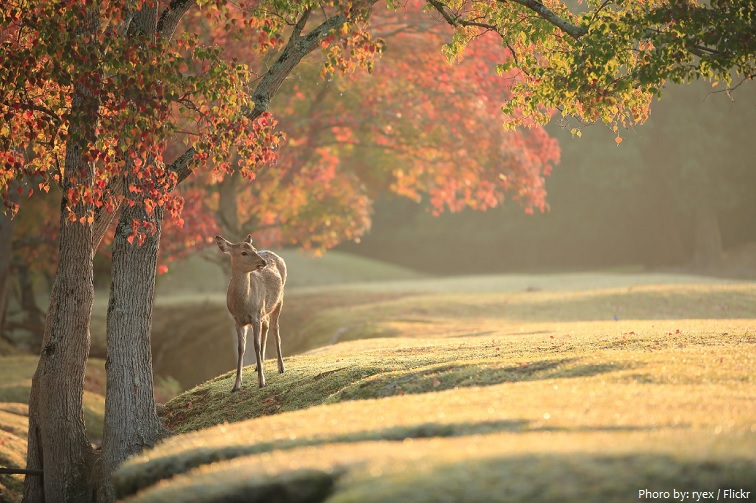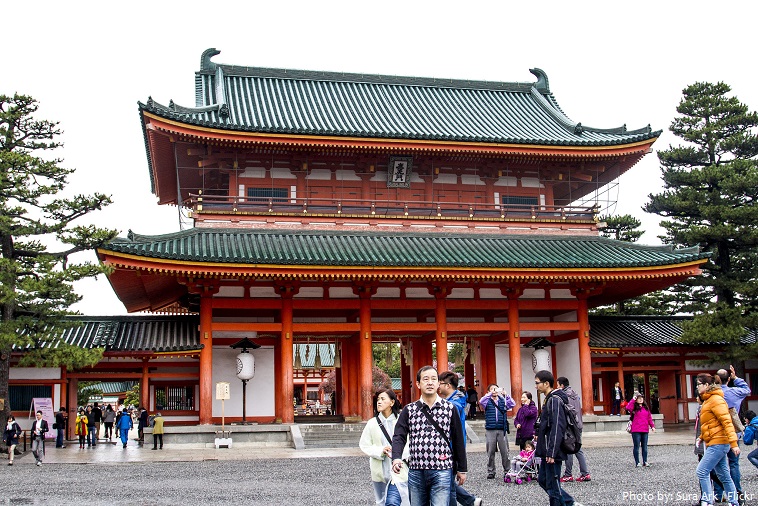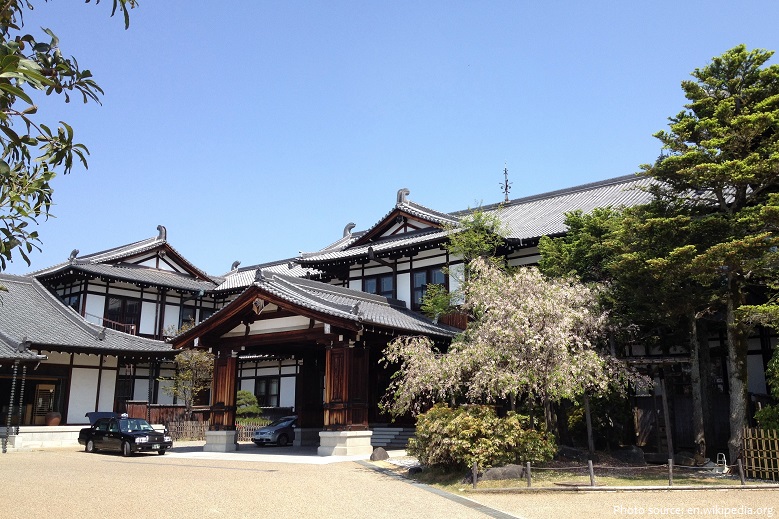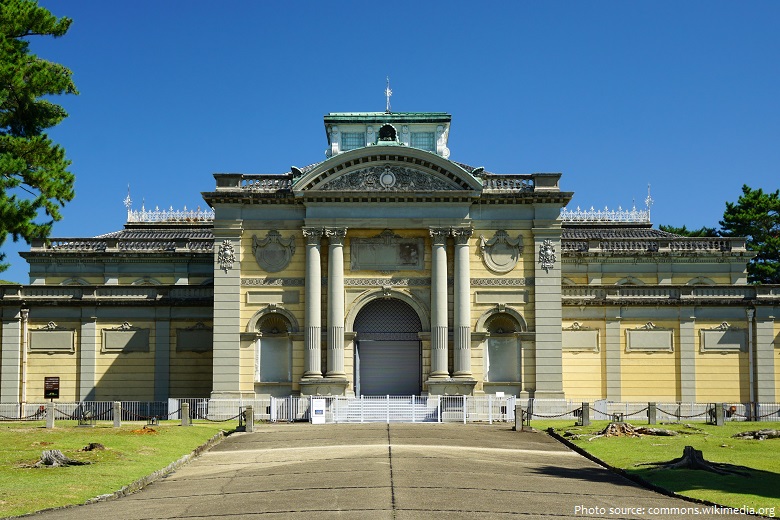Nara is the capital city of Nara Prefecture, Japan.
It is located in the hilly northeastern edge of the Nara Basin, 40 kilometers (25 miles) east of Ōsaka.
As of August 2020, the population of Nara is about 370,000 people.
The city covers a total area of 277 square kilometers (107 square miles).
The highest point in the city is at the peak of Kaigahira-yama at an altitude of 822 m (2,697 ft), and the lowest is in Ikeda-cho district, with an altitude of 56.4 m (185 ft).
Once known as Heijō or Heijō-kyō, the city was established as Japan’s first permanent capital in 710 AD – it was the seat of government until 784 AD.
The city was abandoned by the order of Emperor Kammu in 784 AD in favor of the temporary site of Nagaoka, and then Kyoto which retained the status of capital for 1,100 years.
Rich in ideas and technology from Europe, China and Korea via the Silk Road, Nara is a living museum with 1,300 years of art and architecture to offer.
The quality of heritage in Nara, and the quantity of the oldest heritage, is the highest in the country.
Nara is home to eight temples, shrines, and ruins, specifically Tōdai-ji, Saidai-ji, Kōfuku-ji, Kasuga Shrine, Gangō-ji, Yakushi-ji, Tōshōdai-ji, and the Heijō Palace, together with Kasugayama Primeval Forest, collectively form the Historic Monuments of Ancient Nara, a UNESCO World Heritage Site.
Tōdai-ji is a Buddhist temple complex that was once one of the powerful Seven Great Temples. Though it was originally founded in the year 738 CE, Todai-ji was not opened until the year 752 AD. Its Great Buddha Hall houses the world’s largest bronze statue of the Buddha Vairocana, known in Japanese as Daibutsu. The temple also serves as the Japanese headquarters of the Kegon school of Buddhism.
Kōfuku-ji is a Buddhist temple that was once one of the powerful Seven Great Temples in the city of Nara. The temple was established in 710 AD – the same year when the city become capital. At the height of Fujiwara power, the temple consisted of over 150 buildings. The temple was damaged and destroyed by civil wars and fires many times, and was rebuilt as many times as well.
Kasuga Grand Shrine is a Shinto shrine. It is the shrine of the Fujiwara family, established in 768 AD and rebuilt several times over the centuries. The interior is famous for its many bronze lanterns, as well as the many stone lanterns that lead up the shrine.
Nara Park is a public park established in 1880. It is one of the oldest parks in Japan. The park is one of the “Places of Scenic Beauty” designated by the Ministry of Education, Culture, Sports, Science and Technology (MEXT). Over 1,200 wild sika deer freely roaming around in the park are also under designation of MEXT, classified as natural treasure. While the official size of the park is about 502 hectares (1,240 acres), the area including the grounds of Tōdai-ji, Kōfuku-ji, and Kasuga Shrine, which are either on the edge or surrounded by Nara Park, is as large as 660 hectares (1,600 acres).
Yakushi-ji is one of the most famous imperial and ancient Buddhist temples in Japan, that was once one of the Seven Great Temples of Nanto. The temple is the headquarters of the Hossō school of Japanese Buddhism.
Heijō Palace was the imperial residence during most of the Nara period. The palace, which served as the imperial residence and the administrative centre of for most of the Nara period from 710 to 794 AD, was located at the north-central location of the city in accordance with the Chinese models used for the design of the capital.
Nara Hotel is a five star hotel in Nara. The hotel is located on the hillside overlooking Nara Park. Opened on October 17, 1909, it is one of the most historic hotels in Japan. It was designed by Tatsuno Kingo who was also the designer of the Bank of Japan building and the Marunouchi building of Tokyo Station.
The Nara National Museum is one of the pre-eminent national art museums in Japan. The museum is noted for its collection of Buddhist art, including images, sculpture, and altar articles. The museum houses and displays works of art belonging to temples and shrines in the Nara area. Properties kept in the Shōsōin repository are exhibited each year in the autumn.
Two of the greatest masterpieces of Japanese literature originate in Nara in the 8th century. The Kojiki is a collection of the legends of the gods and how Japan was founded. It shows Nara as the scene of many important historic events and epic dramas. The Manyoshu, the oldest collection of Japanese poetry, is the bible of Japanese letters. Artworks inspired by the poems are displayed at Nara Prefecture Complex of Man’yo Culture.
Nara holds traditional festivals every year, including the Neri-Kuyo Eshiki, a spring festival held in Todaiji temple for over 1,000 years – and the Kemari Festival, in which people wear costumes ranging across 700 years and play traditional games.

